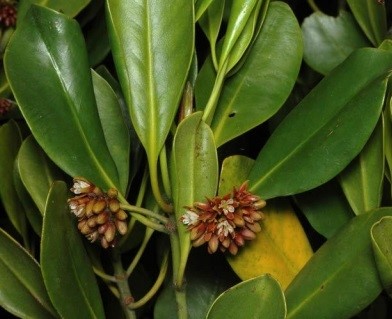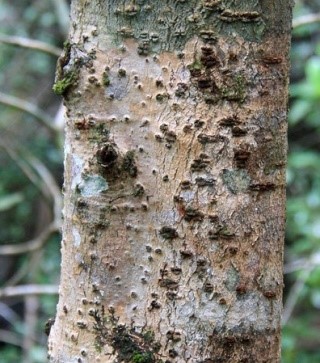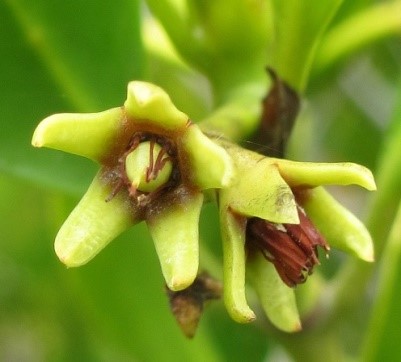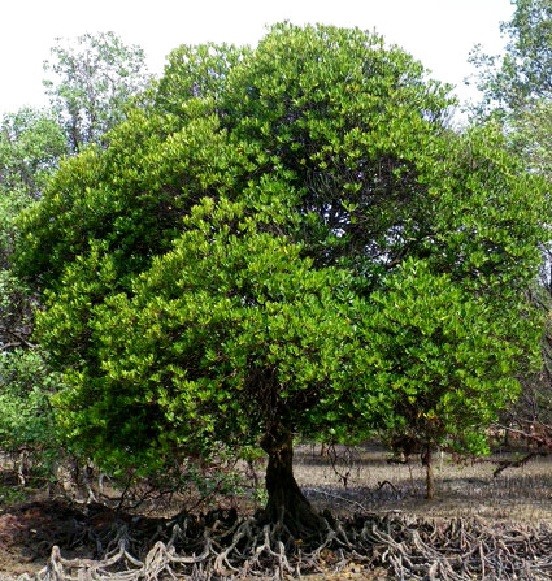Trees
Ceriops tagal (Perr.) C.B. Rob.
Ceriops tagal (Perr.) C.B. Rob.
Description :
A
small to medium, evergreen tree 5 to 15 m tall with a diameter of 20 to 45 cm.
The crown is spreading and may be brush like. Roots may be stilted with knees
20 to 30 cm high. The leaves are simple, pointed at the base with wavy (entire)
margins. The thick, leathery leaves are in opposite pairs,
shiny green and hairless on the tops and yellowish green underneath. The bark
is light to dark grey to reddish brown, smooth or with irregular fissures. The
inner bark is orange or reddish. There are 4 to 5 small flowers to a cluster.
They are yellow green with white petals. The flowers bloom between July and
September. The fruit is a berry, egg shaped 1.5 to 2.5 cm long and leathery.
The seed matures between August and October. It will coppice. It has no known
disease or pest problems of importance. It is reproduced from seed. In nature
the seed germinates on the tree then falls to the ground (viviparous seed). It
is slow growing. This tree can be managed with a coppice system on short
rotations. Because of over harvesting it appears to be threatened with
extinction and should be protected. Wood is orange red changing to reddish
brown. Grains very fine and straight, having specific gravity of 0.89.
Distribution :
This tree is distributed throughout a very wide range from East and South
Africa through South Asia to the islands of the South Pacific. In Pakistan it
is found on mud flats and along salt-water creeks at the mouth of the Indus and
on the Lasbela coast of Balochistan. It is an associate of Avicennia and
Rhizophora, species, the latter being artificially reintroduced in this coastal
belt. An intolerant tree that will not grow well in shade. It grows on well
drained soils and brackish mud flats within reach of an occasional tide. It can
do well on fairly saline soils, is adapted to a precipitation zone of 125 to
1700 mm/yr or more, and a temperature range of 1 to 40°C. It prefers a humid to
arid, hot subtropical to tropical maritime climate for best growth rates.
Uses :
It is considered to be of great value as
firewood, fodder as well as timber. The bark is used in dyes and the batik
industry, as it produces shades of purple, brown and black. The bark is also
used for tanning and toughening fishing lines. It has also medicinal use; the
bark is used to make lotion for ulcers. It is used for charcoal
production and poles.



